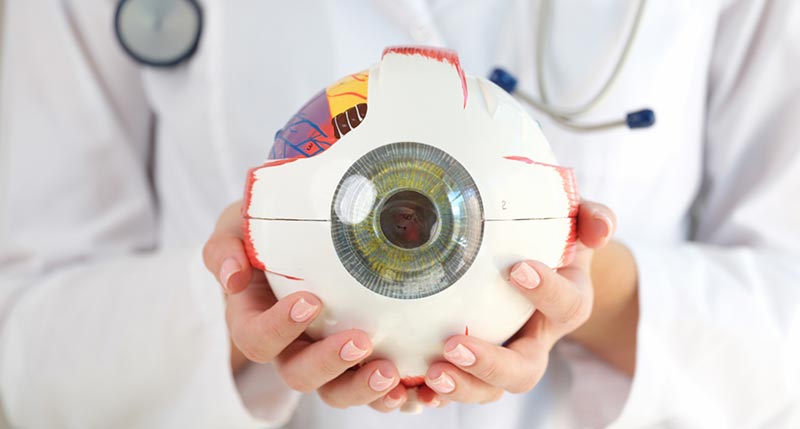Neurologist in Andalusia: Leading Specialists and Clinics Provided
Neurologist in Andalusia: Leading Specialists and Clinics Provided
Blog Article
The Advantages And Disadvantages of Different Refractive Surgical Treatments for Improved Eyecare

LASIK Surgery
LASIK surgical procedure is a frequently executed refractive treatment that intends to remedy vision concerns such as farsightedness, nearsightedness, and astigmatism. This medical method has acquired popularity because of its effectiveness in offering individuals with more clear vision and reducing their dependency on glasses or call lenses. During the procedure, a thin flap is produced on the cornea, and a laser is used to reshape the underlying cells, dealing with the refractive mistake. The flap is after that repositioned, permitting fast recovery and very little pain for the client.
One of the main advantages of LASIK surgical treatment is the fast enhancement in vision experienced by several patients. The majority of individuals discover a substantial improvement in their vision shortly after the treatment, with minimal downtime required for recuperation. Furthermore, LASIK is known for its high success price and reduced incidence of complications when performed by experienced specialists. Nevertheless, like any operation, LASIK also lugs some dangers, including completely dry eyes, glow, halos, and under or overcorrection of vision. It is vital for people taking into consideration LASIK surgical treatment to undergo a comprehensive evaluation by an eye treatment professional to figure out if they are suitable prospects for the procedure.
PRK Treatment
The PRK procedure, likewise understood as Photorefractive Keratectomy, is a type of refractive surgery that aims to fix vision problems similar to LASIK surgical procedure. Unlike LASIK, which entails creating a flap in the cornea, PRK works on the surface area layer of the cornea.
Among the advantages of PRK over LASIK is that it removes the risk of flap-related difficulties because no flap is created during the surgical treatment. This can be valuable for people with slim corneas or those entailed in get in touch with sports where eye trauma is an opportunity. However, the recuperation time for PRK is generally much longer compared to LASIK, as the outer layer of the cornea requires time to regenerate after the procedure. In spite of the longer healing duration, PRK can be an appropriate option for people seeking vision improvement surgical procedure.
SMILE Surgery
A sophisticated refractive surgery method gaining appeal in the field of ophthalmology is SMILE Surgical procedure. Little Cut Lenticule Extraction (SMILE) is a minimally invasive procedure that fixes vision by reshaping the cornea utilizing a femtosecond laser. Unlike typical LASIK surgical treatment, SMILE Surgical procedure involves developing a little cut in the cornea to extract a lenticule, which leads to much less disruption to the corneal structure and possibly much faster healing times.
One of the key advantages of SMILE Surgical procedure is its capacity to deal with myopia (nearsightedness) and astigmatism with high accuracy, causing excellent visual results for individuals. The minimally invasive nature of the procedure also reduces the risk of issues such as dry eye disorder, making it a favorable option for people looking for refractive surgery.

LASEK Strategy
Having checked out the advantages and factors to consider of SMILE Surgery, one more noteworthy refractive surgery technique worth taking a look at is the LASEK Technique. LASEK, which stands for Laser-Assisted Subepithelial Keratectomy, is a type of laser eye surgical treatment that intends to fix refractive errors such as myopia (nearsightedness), hyperopia (farsightedness), and astigmatism.
Unlike LASIK, LASEK does not entail developing a corneal flap. Instead, during a LASEK treatment, the doctor uses a watered down alcohol service to loosen up the thin external layer of the cornea, referred to as the epithelium. This layer is then gently moved aside to allow the laser to reshape the underlying corneal cells. When the cornea has actually been improved to the wanted level, the epithelial layer is rearranged.
One of the primary advantages of LASEK is that it you could try this out can be ideal for people with thin corneas that might not be great candidates for LASIK. In addition, LASEK typically results in very little post-operative pain and a quicker healing time compared to PRK. However, the aesthetic healing procedure with LASEK might be somewhat longer than with LASIK.
Implantable Call Lenses
Implantable Get in touch with Lenses supply a lasting vision modification service for individuals looking for a choice to standard call lenses or glasses. These lenses, additionally referred to as phakic intraocular lenses, are surgically put right into the eye to remedy refractive errors such as myopia (nearsightedness), hyperopia (farsightedness), and astigmatism. Recommended Reading cardiologist andalusia. Unlike traditional contact lenses that rest on the surface area of the eye, implantable get in touch with lenses work within the eye itself, providing clear vision without the demand for everyday upkeep or removal
One of the vital benefits of implantable contact lenses is their permanence. When inserted, they can continue to be in the eye indefinitely, supplying regular and secure vision adjustment. Furthermore, these lenses can be an exceptional choice for people who are bad candidates for laser eye surgery or that prefer a reversible vision improvement treatment.
However, implantable get in touch with lenses do lug some dangers, consisting of the potential for cataracts or enhanced eye stress. It is important for individuals considering this option to consult with an eye treatment professional to determine if implantable get in touch with lenses are the best selection for their specific needs and eye wellness.
Verdict
In verdict, each type of refractive surgery has its very own benefits and downsides. LASIK surgery is preferred for its quick recovery time, while PRK his explanation procedure might be appropriate for patients with slim corneas.

Overall, SMILE Surgical treatment presents an appealing alternative for people looking to enhance their vision via refractive surgery.
Report this page